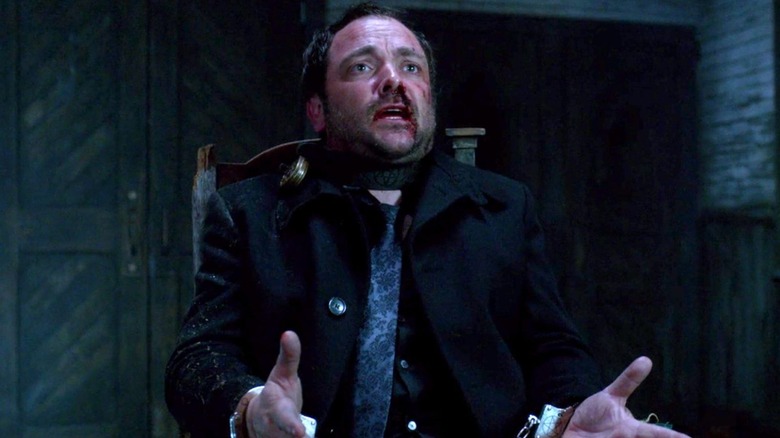
Everyone has their favorite incarnation of "Star Trek." There's something to recommend in just about every version, even if it's just the inevitable Jeffrey Combs cameo. Fans who like weirder aliens can enjoy "Prodigy. Those who want to see characters' moralities challenged in times of war have "Deep Space Nine." For some, Patrick Stewart's master thespian skills make "The Next Generation" an undisputed winner, while others may argue that "Star Trek" was never about great acting, but rather broadly operatic sci-fi adventures.
So, which is the best? Beat-for-beat, episode-for-episode, it has to be the very first "Star Trek" show, known to fans as "Star Trek: The Original Series." Almost every subsequent incarnation of Trek draws its strengths from the original, and their weaker episodes usually occur when they depart from the roadmap that "The Original Series" provided. Meanwhile, every episode featuring William Shatner's Captain Kirk, Leonard Nimoy's Mr. Spock, DeForest Kelley's Dr. McCoy, and the rest is, at its worst, still compulsively watchable. Let's run down the reasons why.
There Was Nothing Else Like It On TV

Although Gene Roddenberry originally pitched "Star Trek" as "Wagon Train" in space, it ultimately played less like a TV western and more like "The Twilight Zone," which went off the air two years before "Star Trek" premiered. Like Rod Serling's groundbreaking show -- and not much else -- "Star Trek" was flexible in the genres it covered. It tackled historical fiction by going to planets made up of gangsters and Nazis. It explored prejudice through the metaphors of various alien species. Episodes highlighting Tribbles and Harry Mudd provided comedy, while the pursuit of a Romulan ship had echoes of a submarine drama. Even Biblical allegories were on the table. However, no matter what form an episode's story took, it usually involved a subtle parallel with the present, and a moral applicable to life here on Earth.
By contrast, most other shows on TV in the '60s stayed in their lanes. Even the closest competitor to "Star Trek," "Lost in Space," was a much more straightforward space adventure. Part of the series' versatility came from the push and pull between the network and Roddenberry; the former wanted action, while the latter preferred more cerebral stories. NBC even rejected the first "Star Trek" pilot, "The Cage," but allowed Roddenberry to make a second, "Where No Man Has Gone Before," which sealed the deal. Roddenberry ultimately got the best of both worlds, of course, by reusing footage from "The Cage" in the two-part episode "The Menagerie."
For the most part, subsequent "Star Trek" shows faced relatively little network interference. Sometimes, however, restrictions can be the greatest source of creativity, and that tension between the smart and the visceral helped give the original "Star Trek" its timeless appeal. Its best successors capture a similar balance.
The Catchphrases

Aside from Jean-Luc Picard's "Engage" and "Make it so," few "Star Trek" deliver memorable catchphrases. However, even people who never watch science fiction can quote all three "The Original Series" leads. The characters' quotability was even the premise of a hit 1987 novelty song by The Firm, which ended up topping the charts in the United Kingdom.
Kirk never actually said "Beam me up, Scotty" on the series, but he did utter a number of variations: "Scotty, beam us up," "Scotty, beam me up," a simple "Beam us up," and so on. On the other hand, Spock did often utter "Illogical" and "Fascinating" when faced with improbable phenomena, and Dr. McCoy's "Damn it, he's dead, Jim," and "I'm a doctor, not a [blank]" are stone-cold classics. We love Captain Sisko and "Deep Space Nine," but does he have a single signature quote as memorable as any of these? If you have to ask, then the answer is a resounding no.
Martin Luther King, Jr. Let His Kids Watch It
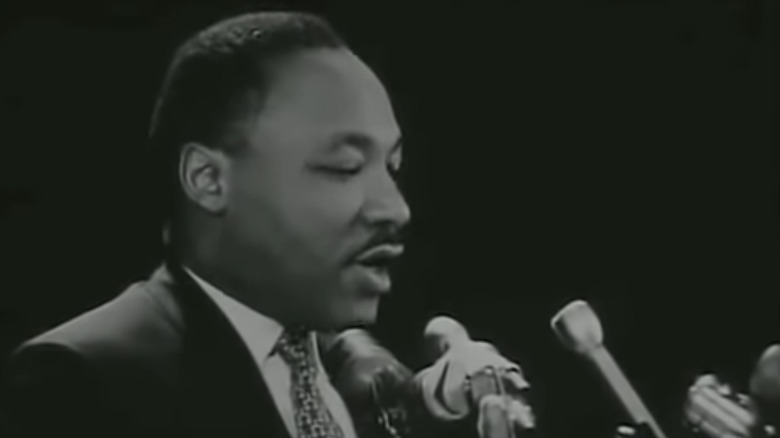
In related what is, perhaps, the most famous anecdote she ever told, the late Nichelle Nichols has talked repeatedly about how she wanted to quit "Star Trek," and how she was talked out of it by none other than the Rev. Martin Luther King, Jr. King met Nichols at an NAACP meeting and told her how important it was for viewers to see a Black woman in a position of authority. This wasn't just conjecture. The character of Uhura was so important to Whoopi Goldberg that she inspired Goldberg to become an actress, and was the main reason why Goldberg pushed so hard for a role on "Star Trek: The Next Generation."
What often gets buried in retellings of this story is that King also confided in Nichols that "Star Trek" was the only show that he and his wife, Coretta, would let their three kids stay up late to watch. Now, King didn't live to see any subsequent "Star Trek" series, but that's still a powerhouse of a recommendation, and none of the other Trek shows have received an equivalent endorsement. It's great to see figures like David Cronenberg and Stacey Abrams make cameos on "Star Trek: Discovery," but let's face it: Neither is on MLK's level.
It Spawned Modern Fandom As We Know It

Have you ever signed a petition to keep your favorite show from being canceled? What about attending a fan convention? Well, if so, you're following in the footsteps of the original Trekkies. A letter-writing campaign organized by fans, the first ever designed to keep a show on the air, helped get "Star Trek" renewed for season 3. After the series' cancellation in 1969, conventions kept the show's fandom alive, paving the way for the proposed sequel series that ultimately became the first "Star Trek" movie. In the '80s, comic book fans Gary Berman and Adam Malin formed Creation Entertainment and made "Star Trek" cons a lucrative business.
A number of popular fandom tropes started with "Star Trek," too. The term "Mary Sue," often used to describe a practically perfect female character who's clearly a stand-in for the author, originated in a "Star Trek" fanzine. Similarly, the erotic fan fiction subgenre called "slash," which depicts sex between ostensibly straight male characters, began with Kirk and Spock. "Star Trek" conventions did not invent cosplay; however, they have been a hub for hobbyist costumers from the beginning.
Diverse Casting Was The Point

Nowadays, the sour corners of the Internet complain of "wokeness" and "forced diversity" every time an actor of color gets cast in a major sci-fi story. For the original "Star Trek," however, that was the actual point. Gene Roddenberry went out of his way to depict a multi-racial, multinational crew to give Cold War-era audiences hope that in the future, racism, nationalism, and xenophobia would be quaint relics of the past. (Sexism, maybe not so much.) While diversity has continued to be a key value of "Star Trek," the optimism hasn't always, partly because Roddenberry toward the end of his life over-corrected and insisted there never be any conflict between crew members. The moment he was gone, we got the militarism of "Deep Space Nine," the far-from-home despair of "Voyager," and "Enterprise" doing space 9-11.
At least with the likes of Captains Burnham and Georgiou, the franchise has mostly put sexism back in the past.
Everybody You Know Does A Shatner Impersonation
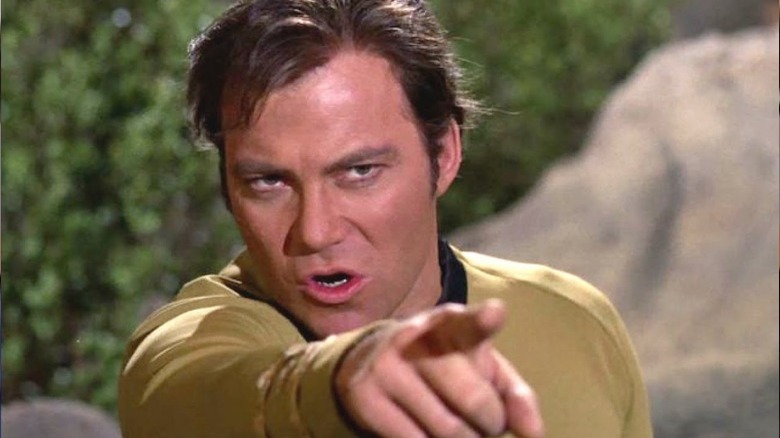
The dramatic ... pauses. The ... hand gestures. William Shatner is one of those impressions that everybody thinks they can do. Some celebrities have his mannerisms down pretty well: Kevin Pollak and Jim Carrey come to mind, and John Belushi wasn't bad, either. However, the point is that, if you start talking in the pauses, doing the hands, and blurting out "Spahk!," almost everyone knows who you're supposed to be.
Can anybody say that about Captain Archer? Or Sisko? Janeway's more distinctive, but impressions of her also resemble Prymaat Conehead. Shatner is a category unto himself, made even more so by the fact that he started leaning into the caricature once it became ubiquitous.
Ironically, the episode from which most Shatner imitations seem to derive is "Turnabout Intruder," in which a neurotic woman possesses Kirk's body. So, really, everyone's actually doing an impression of Shatner's impression of female hysteria.
The Social Commentary, Both Subtle And Otherwise

In "The Original Series" episode "Let That Be Your Last Battlefield," Frank Gorshin, best known as the Riddler in 1966's "Batman," sports a paint job that's half white and half black, and plays a character who is bigoted against an alien who's half black and half white simply because his colors are reversed. In "Plato's Stepchildren," omnipotent beings force Kirk and Uhura to smooch, thus creating the first kiss between a white man and a Black woman on a scripted network show. Yes, the original series sometimes had all the subtlety of, well, William Shatner when it wanted to get a point across, but at least it was out there making statements. Very few of its contemporaries could say the same.
At other times, "Star Trek" used the trappings of a more traditional genre story to smuggle in social commentary. "The Devil in the Dark," for example, makes audiences understand that a crawling blob of rock was only killing people in order to protect its eggs, which can be read as either a plea for animal rights or a statement against imperialism, depending how smart you think the Horta actually is. "City on the Edge of Forever," widely regarded as one of the best episodes of the show, is a great, romantic time-travel story, but it's also an argument against going for the quick, short-term gains, as well as a lesson on the need to make sacrifices for the greater good. "The needs of the many outweigh the needs of the few, or the one" became a "Star Trek" catchphrase thanks to the movies, but the series was subtly making the same argument decades before the Enterprise cruised across the silver screen.
The Strength Of The Core Trio
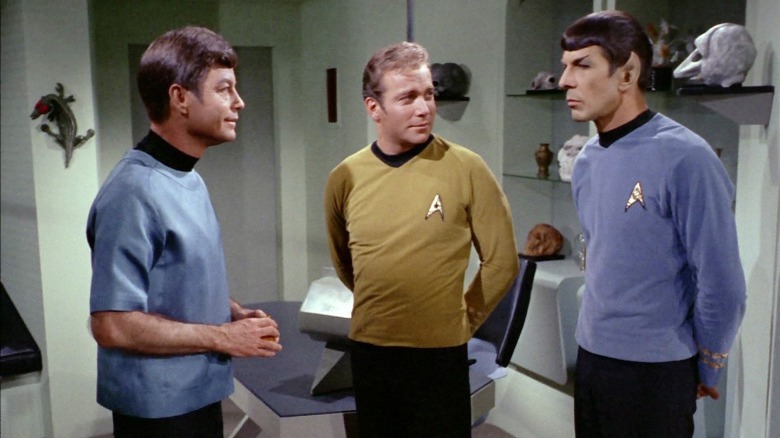
From "The Next Generation" onward, every "Star Trek" series has insisted on giving each one of the major characters their own spotlight episodes; you'll also find many installments in which the two characters who argue the most are stranded together in a shuttle or on an away mission. Well, while Sulu, Uhura, Chekov, and the rest might've deserved individual showcases, the people behind "Star Trek" knew that the relationship between Kirk, Spock, and McCoy was the heart of the show, and "The Original Series" is the better for it. Sure, the trio might separate occasionally, but in the end the crew always works best as an ensemble.
Perhaps the brevity of the show's run is to blame. Had "Star Trek" lasted for longer than three seasons, the writers might have ended up pitching more ideas that didn't revolve around the core three. Still, think about your least-favorite "Star Trek" episode, from any of the series. Chances are that it's one that focuses on a character that you don't care about. That was never the case for the O.G.
Even When It's Bad, It's Great

Ask fans of "The Original Series" what the worst episode of the show is, and they'll probably name "Spock's Brain," in which everyone's favorite Vulcan has his brain stolen, leaving him to wander around like a zombie. Or maybe they'll mention "The Way to Eden," in which space-hippies who refer to uncool people as "Herbert" convince Spock to jam with them on his Vulcan harp. Sure, these episodes are incredibly silly, but they're also funny as hell, both as bizarre examples of what NBC thought would be perceived as cool at the time and also because Shatner, Nimoy, and the rest of the cast fully commit to the material.
When "The Next Generation" is bad, you get a Wesley episode. When "Deep Space Nine" is bad, it's probably an episode about Rom and his mother. But when "The Original Series" is bad, you get Shatner going full Shatner, Nimoy indulging his hippie impulses, and some super-'60s weirdness. Despite the absurdity — or, maybe, because of it — it rules.
It Can Be Really Creepy
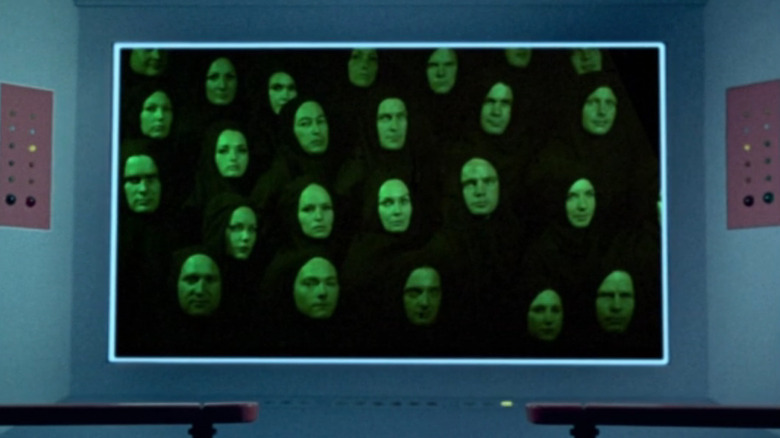
It's not especially controversial to say that classic "Trek" looks dated. However, even with those old-fashioned effects, the show can also be extremely unsettling when it wants to be. Vina suddenly revealing her burned and mangled form in "The Menagerie" is still shocking, and is Captain Pike's radiation-crippled body, which can only beep yes or no. Then there's "The Mark of Gideon," in which frightening faces peer into an abandoned Enterprise from every window. And, of course, we can't forget the original incel Charlie X, whose ability to roll his eyes back in his head every time he uses his psychic powers remains one of the show's creepiest natural special effects.
Within the reality it has established, the original "Star Trek" possesses a real power to scare viewers. Even if fans know that only random ensigns wearing red shirts will die, the show can pull the rug out from under reality at any time. That's a great way to build tension, and makes many "Star Trek" installments truly disturbing.
A Limited Budget Encouraged Greater Creativity

In "Star Trek: Strange New Worlds," reptilian alien babies burst out of human bodies, then quickly grow into man-sized CGI lizards. "The Original Series" had neither the budget nor the freedom to even consider such things, and its take on the Gorn accordingly looks more like a knock-off Godzilla suit than the fearsome creatures that hunt Captain Archer's crew.
What "Star Trek" did have, though, was imagination. The Guardian of Forever, a powerful alien capable of time travel, is basically a walk-through light fixture. When "Spectre of the Gun" called for a Wild West town but the budget didn't allow for a full one to be built, the use of minimal props and sets made for a more surreal, alien landscape. That Romulans and Vulcans share a common heritage is a fun story twist, but it was likely conceived of in order to reuse alien makeup effects (and actors, as Mark Lenard played both a Romulan captain and Spock's father). Now that shows can do anything, they don't always leave room for the writers to serve as the real special effects.
When you can't afford to be realistic, you have to be weird instead. Many, many UK sci-fi shows, from "Doctor Who" to "Sapphire and Steel," have built their cult followings out of that line of thinking. It's an aesthetic that makes "The Original Series" memorable in ways that simply aren't available to more modern "Star Trek" shows.
It Launched The Amazing Music Careers Of William Shatner And Leonard Nimoy

Many "Star Trek" actors have excellent musical pedigrees. Nichelle Nichols toured with Duke Ellington. Brent Spiner is a musical theater veteran who went on to record an album of show tunes and standards. Ironically, though, their efforts pale in terms of notoriety to those of two "The Original Series" leads.
At the height of the show's popularity, William Shatner recorded "The Transformed Man," which paired monologues from classic plays with dramatically read pop lyrics. While his Shakespeare readings are fairly straightforward, Shatner screaming the lyrics to "Mister Tambourine Man" in an inexplicable Irish accent is the stuff of pop culture legend. Same goes for his attempts to sound high while "singing" the Beatles' "Lucy in the Sky with Diamonds." In 2004, Ben Folds produced Shatner's second album, "Has Been. He's released a number of records since then, including the country album "Why Not Me," the Christmas compilation "Shatner Claus," and the space-themed "Seeking Major Tom."
By contrast, Leonard Nimoy actually tried to hit the right notes when he sang, but his cigarette-enhanced croak was not optimal for crooning. When he indulged his own fandom and recorded an ode to "The Hobbit" protagonist Bilbo Baggins, the results were even more ludicrous than Spock jamming with space hippies. Yet, somehow, we remember these laughable efforts better than Nichols' legitimate singing career. Sadly, no other "Star Trek" actor has dared to emulate Shatner's singing style in the years since, although we'd kill to hear Jeffrey Combs dramatically reading out Nirvana songs.
Read this next: Every Star Trek Show And Movie In Chronological Order
The post 12 reasons why The Original Series is the best Star Trek show appeared first on /Film.
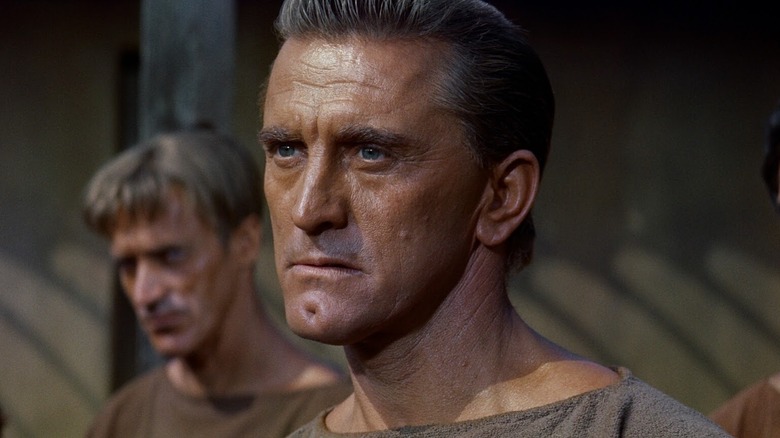





![DOOM I + II: Enhanced (+ 16 Add-ons + Classic DOOMs, MULTi5) 390 MB / DOOM I + II: Enhanced (+ 16 Add-ons + Classic DOOMs, MULTi5) 390 MB [FitGirl Repacks] DOOM I + II: Enhanced (+ 16 Add-ons + Classic DOOMs, MULTi5) 390 MB / DOOM I + II: Enhanced (+ 16 Add-ons + Classic DOOMs, MULTi5) 390 MB [FitGirl Repacks]](https://preview.redd.it/x4m8xofomxi91.jpg?width=640&crop=smart&auto=webp&s=eb4324a65ea7bc556b31f3227e512bca25424e07)

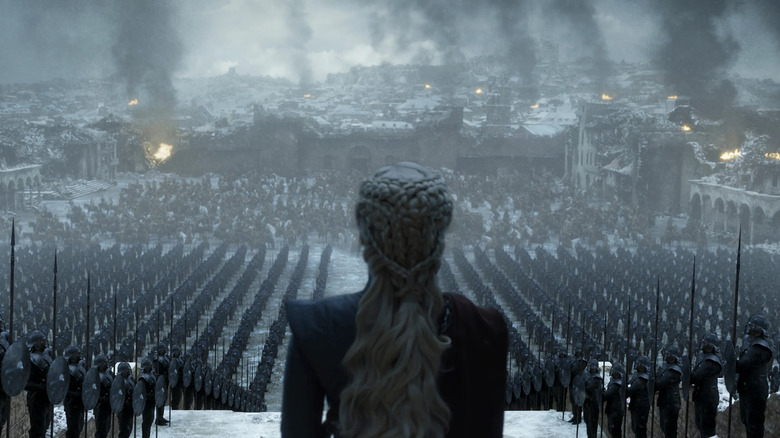



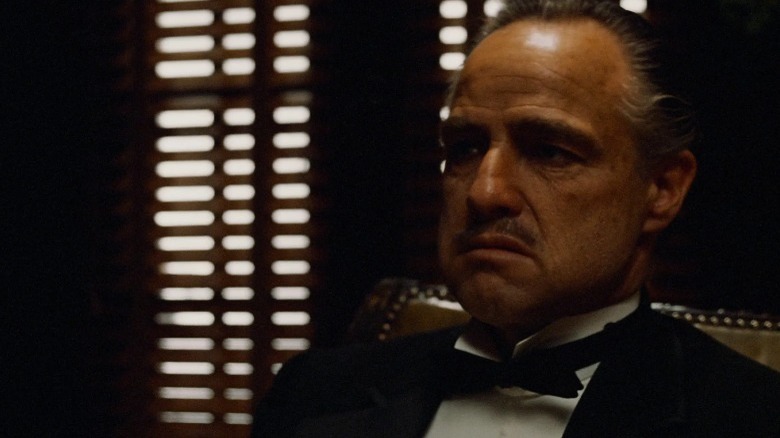


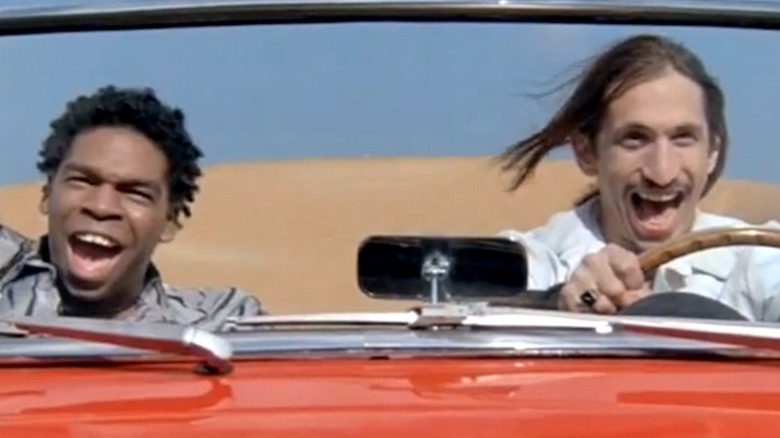


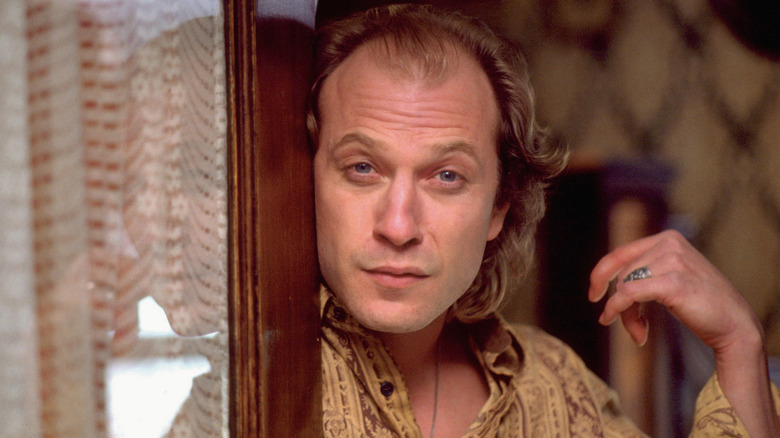

















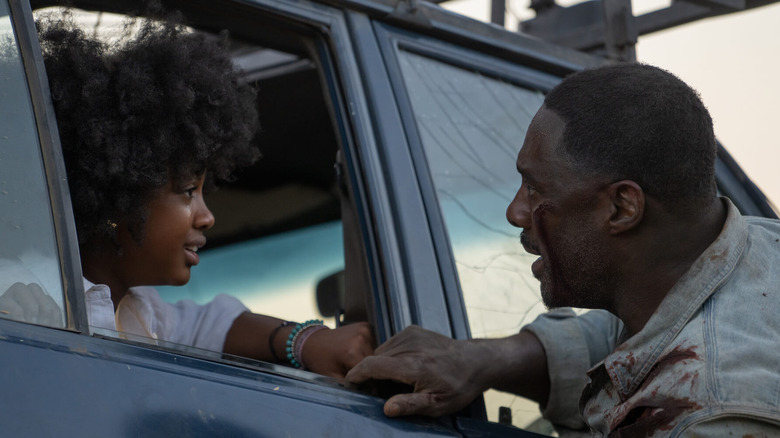















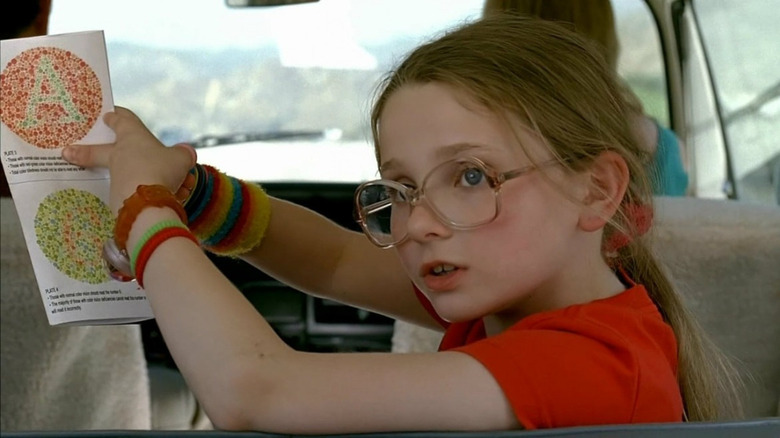

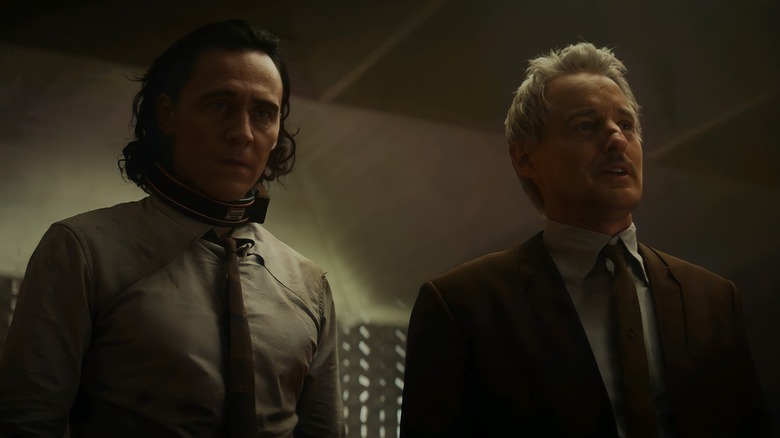






 A trio of new physical releases from Kino have got me thinking about a lot of things. First, what a shame it is that more titles from the golden age of made for TV movies haven’t seen release on Blu-ray or even DVD. To that I say, TGYT (Thank God for YouTube). Of course what YouTube offers in terms of quantity is mitigated by often crappy image quality. Several titles I’d like to get my eyes on just don’t seem to exist in watchable format. So kudos to Kino for releasing great looking versions of these eco horrors on Blu-ray, with audio commentaries to boot. The themes that distinguish Eco-horror have to do with the natural world. There are films in...
A trio of new physical releases from Kino have got me thinking about a lot of things. First, what a shame it is that more titles from the golden age of made for TV movies haven’t seen release on Blu-ray or even DVD. To that I say, TGYT (Thank God for YouTube). Of course what YouTube offers in terms of quantity is mitigated by often crappy image quality. Several titles I’d like to get my eyes on just don’t seem to exist in watchable format. So kudos to Kino for releasing great looking versions of these eco horrors on Blu-ray, with audio commentaries to boot. The themes that distinguish Eco-horror have to do with the natural world. There are films in...


